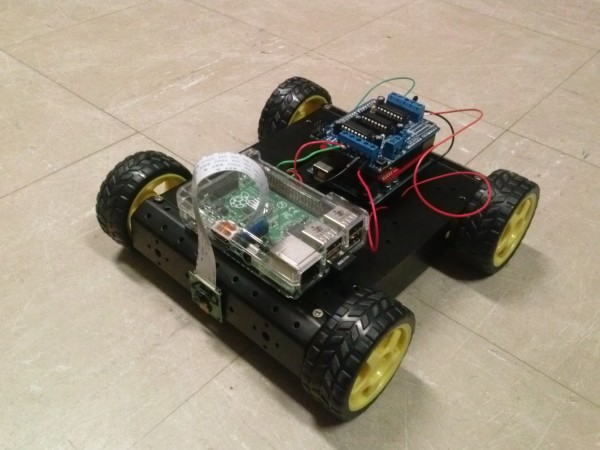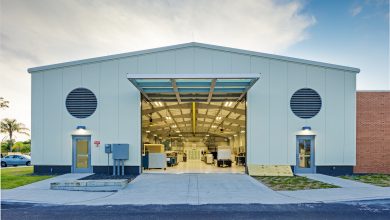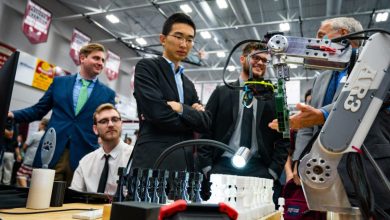Students design and build remotely operated search bot
Scientists and engineers in various fields encounter different kinds of challenges and sometimes dangerous environments while trying to conduct research. Florida Tech electrical and computer engineering students created a remotely operated search bot that will help scientists conduct their research while staying out of harm’s way.
The possibility of creating something simple yet versatile is what inspired Alejandro Peña-Pabón and Manuel Castro Rosales to create a programmable search bot, decked out with cameras and remote sensors.
Remotely operated search bot to the rescue
“Our project was designed to be driven remotely to locations considered hazardous to humans,” Alejandro said. “The Search Bot collects data on natural gases, flammable gases and temperature, and transmits the data back to the central server over Wi-Fi without risking the life or health of a human being.”
The team initially intended their design to be used by military service members to test hazardous conditions but eventually determined the search bot could have wider applications. Manual and Alejandro modified their design so it could be used in different scenarios, like field research or even home safety monitoring.
The duo encountered a slew of challenges in every aspect of their project, ranging from their camera stream’s lag to their motor’s interference on the Arduinos. Even the XBee configuration and the entire coding process turned out to be quite tedious in general.
Intended for anyone making interactive projects, Arduino is an open-source electronics platform based on easy-to-use hardware and software. Alejandro and Manuel used Arduino and Raspberry Pi as the brain of their Search Bot and had to find ways to efficiently and effectively implement their design.
“The biggest problem we had was trying to adjust all our components and power supplies on a very limited space,” Alejandro said.
“During the design process of our website, we learned about the Google Charts API which was easily implemented into our HTML website,” Alejandro said. “We also learned how to program and work with Arduino and Raspberry Pi.”
Second Chances
Alejandro reflected that if he and Manuel could do anything differently on a second attempt at the project, they would incorporate an additional member with more experience working with microcontrollers.
“We would have also liked a bigger chassis so that we could mount all our components, and incorporate a camera with movement,” he said. “Due to time and lack of space, we were not able to include all the sensors we wanted.”
“This project enabled us to gain important experience as far as programming, team-work and problem-solving,’ Alejandro continued. “It also taught us how to manage our time efficiently in order to meet deadlines.”
Alejandro and Manuel had to do extensive research to determine how their components operated, make sure their project remained under budget and gained a deeper understanding of business and product management.
Going Forward
The bot-designing pair believe that the best advice they could give to future designers is to not worry about failure.
“Throughout our project, we experienced challenge after challenge but we were able to adapt our project,” Alejandro said. “It is also very important to pre-plan so you don’t encounter as many problems as we did.”
Alejandro and Manuel strongly believe that the main takeaway from this experience is all the knowledge acquired through the process of building what turned out to be their final product.






